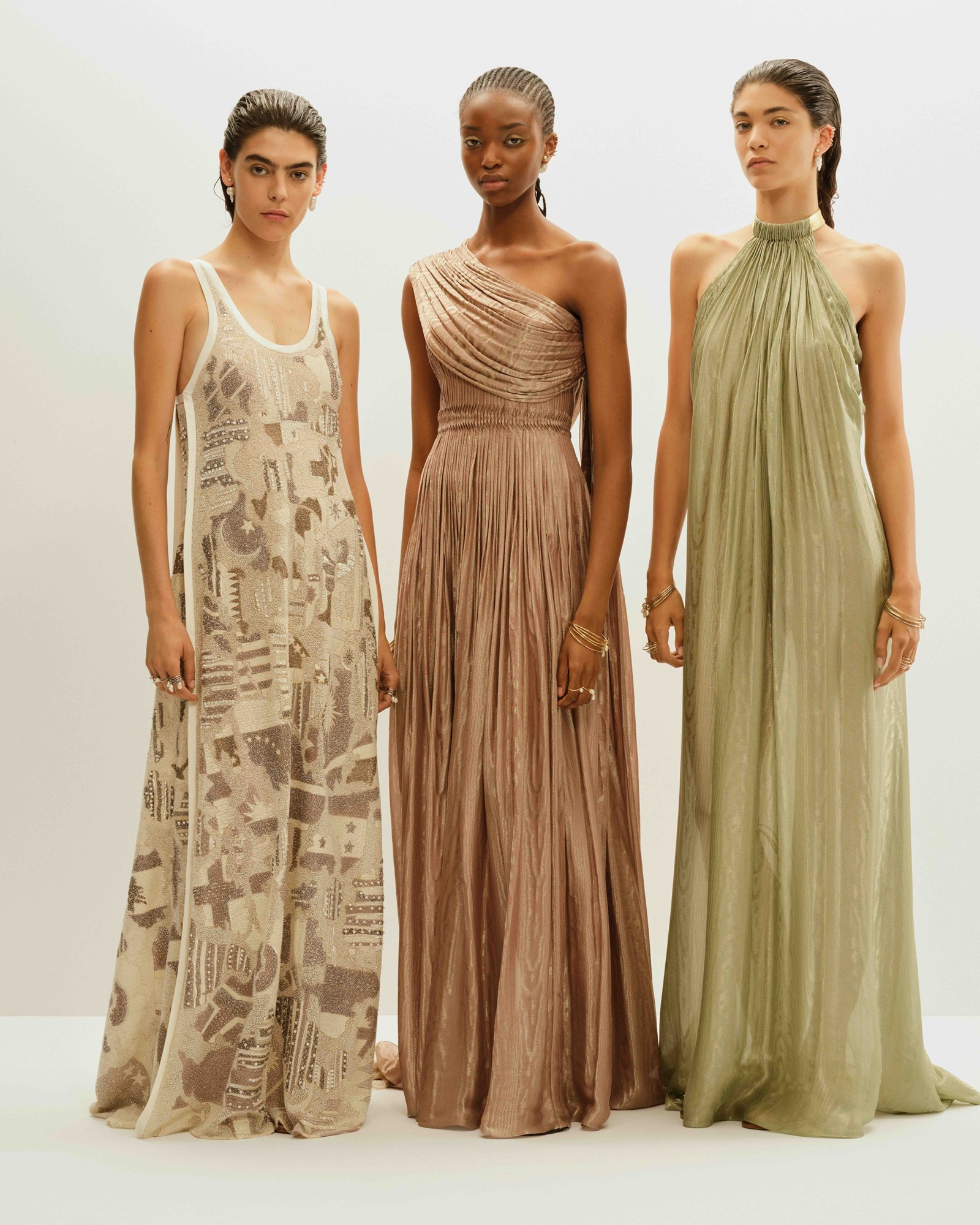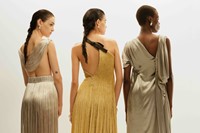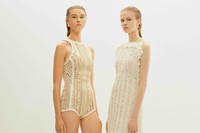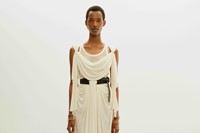In case you’ve been under a rock – or, indeed, in case you haven’t been at fashion shows and trying to cross the Seine with mile-long traffic jams – you may have missed that the Olympics are about to begin in Paris. For the first time ever, that event has forced the Autumn/Winter 2025 haute couture shows to jump forwards a week, before the city grinds to a complete halt. But its imprint is still shaping the clothes designers are showing. Witness Maria Grazia Chiuri’s latest Dior show, inspired by the notion of the body in dynamic motion, couture with an unmistakable sports undercurrent – made overt in the show space with vast murals of athletes, envisaged by the late American artist Faith Ringgold and executed in painstaking embroidery.
Chiuri’s moodboard this season was filled with images of ancient female athletes from Sicilian mosaics, alongside photographs of Alice Milliat, a pioneer of women's sport whose lobbying led to the accelerated inclusion of various female sports categories in the modern Olympic Games in the early 20th century. Most of that happened a century or so ago, in the 1920s – a period when sportswear first truly entered the fashion vocabulary, reshaping how couturiers created clothes. All in all, it was a fusion that spoke to Chiuri and to her inherent, deep-seated belief in emancipating women through their clothes.
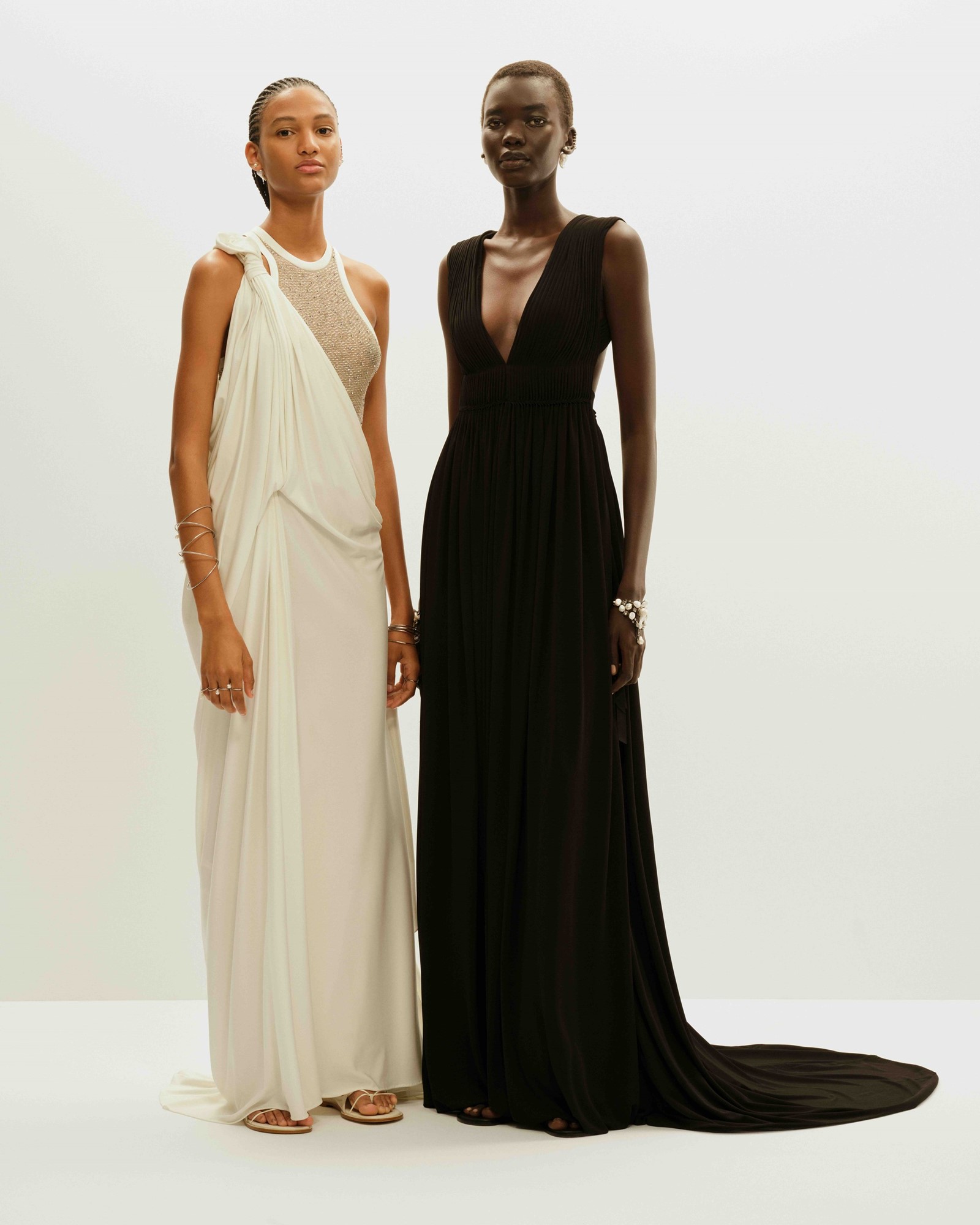
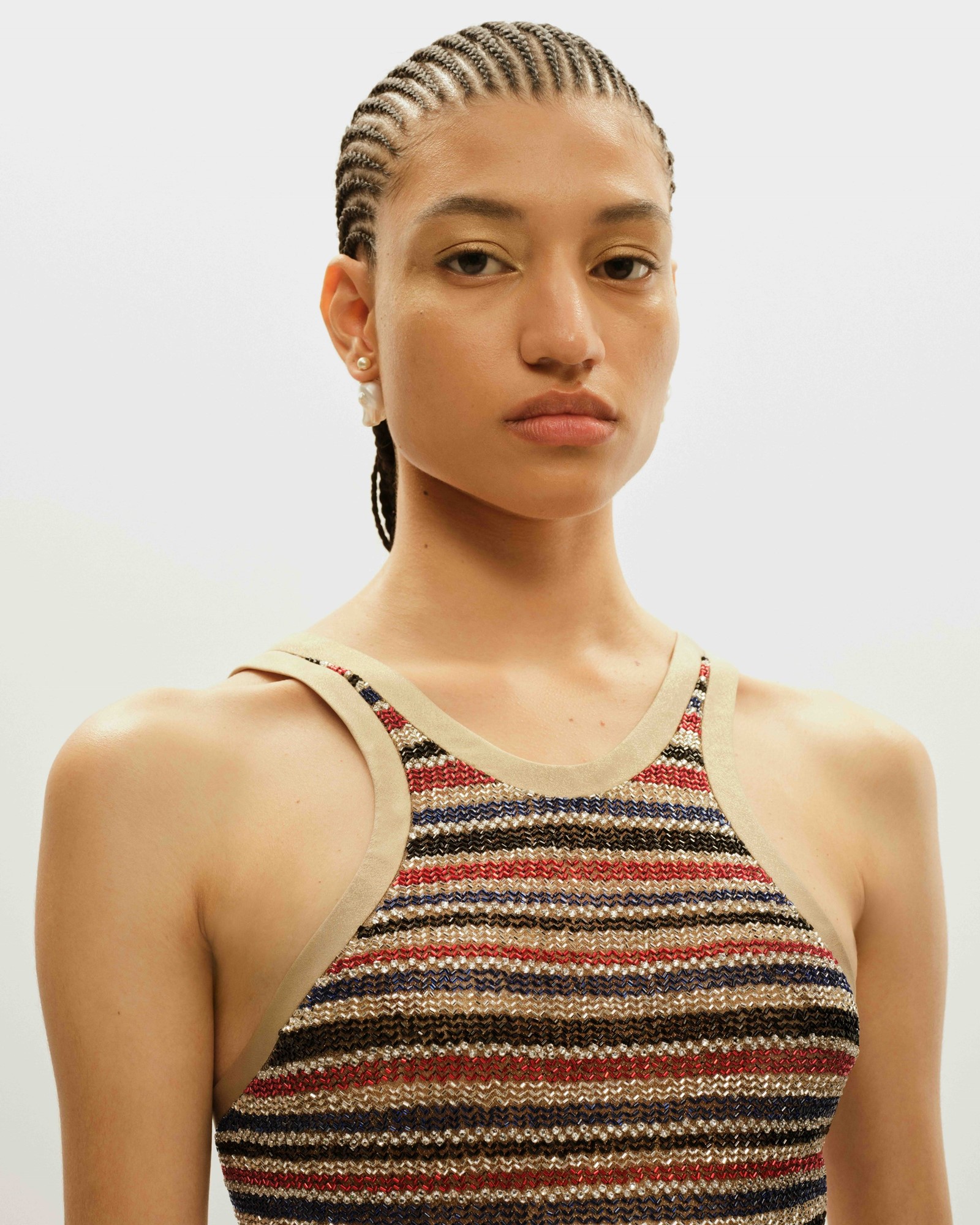
That said, it wasn’t specifically sport that interested her – and she certainly didn’t see this as an Olympic-themed collection, despite nods to ancient drapery. “Performance” was the word she used. “I don’t think about sports in a traditional way. Sport for me is about the body – about how the dress, the clothing can perform.” Incidentally, that isn’t a new idea either in fashion generally or for Chiuri specifically – Gabrielle Chanel’s entire output plugged sportswear into high fashion, with short skirts and revolutionary stretch fabrics, while Chiuri’s own first collection for Dior back in 2016 took fencing as its theme, translating those sharply-dressed, sword-wielding women into fashion icons. She’s carried on on much the same path ever since.
The idea of freedom was key, as was the notion of movement. Neither of which are ideas you traditionally associate with Christian Dior’s own highly-constructed, heavily-corseted New Look, which was actually a riposte to the supple jerseys and fluid crepes of the interwar years. By way of contrast, Chiuri brought those back, draping silk and metal jerseys to craft her sinuous evening dresses with the ease of T-shirts – “I wanted to show how much the material can influence the shape of the dress and the movement of the body,” she stated. Other looks were anchored not on corsets – as Dior often did, proposing dresses that appeared to be draperies of chiffon but were actually virtually cemented firm to rigid bodices beneath – but to knit tanks and maillot, like couture swimsuits.
If Chiuri used a corset, it was featherweight – but largely, she didn’t, in the same way her iterations of Dior’s famous ‘Bar’ jackets have been executed in knit or gentle tailoring to hug gently against the body rather than cinch it mercilessly. “Dior came after the Second World War – he had an architectural approach and he built a body,” Chiuri said. “I do not. I want to create clothes where the body feels good.” And indeed the sensation and sensuality of these clothes were the key takeaways, cloth draped against skin in manners akin to Greco-Roman chitons and togas. So maybe the Olympics weren’t that far away from thought after all.
“All my work is about deconstruction,” Chiuri stated – but rather than ripping clothes apart or tearing them inside out, what she means is to literally rip out the stuffing, the bombast and the restriction of clothes, to liberate the body inside. In that respect, she is the latest in a long line of female designers, from Chanel through Madeleine Vionnet’s bias cut, to Madame Grès and Donna Karan. That’s a hell of a lineage to belong to.
